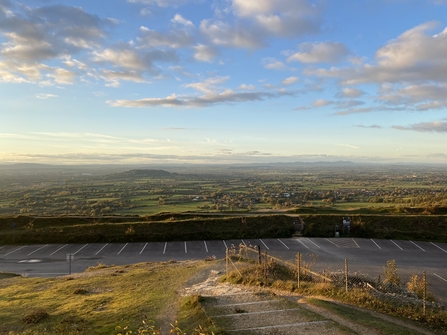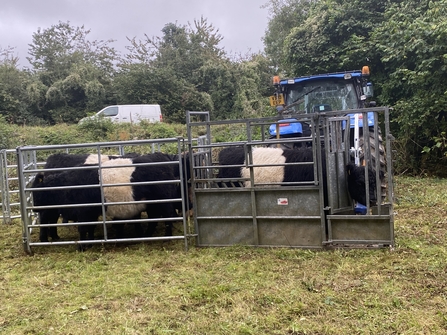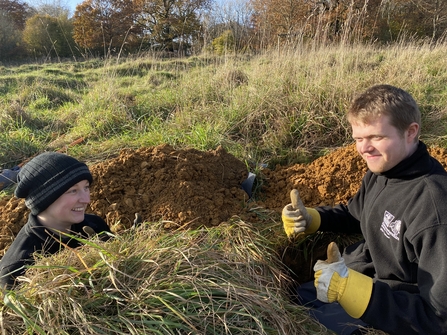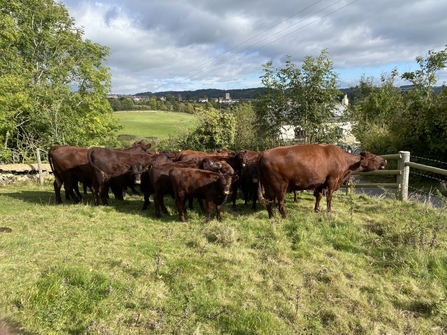Over the course of my Traineeship, one of the major things I have gained a deeper appreciation for is simply the size and beauty of Gloucestershire. Being part of a land management team and helping to care for and enhance the wonderful habitats around our county has shown me what the environment we live in really needs to thrive.
As part of the east team, Holly, Jamie, Ruby, and myself work across a wide range of habitats throughout the county, from a Site of Special Scientific Interest (SSSI) grassland at Brassey, to a working dairy farm with protected flood meadows at Greystones Farm, down to ancient woodlands at Lower Woods. The varied landscapes we work in means that no two days are the same and helps keep our experiences of the traineeship fast-paced and exciting!
When we’re working on the reserves team with Dan Winter and Lorna Baggett, GWT Land Management Officers, we meet daily at Crickley Hill which acts as the base we work from. One of the most amazing things about this site has got to be the views you can see over Cheltenham and towards Gloucester as it looks completely different every day!










